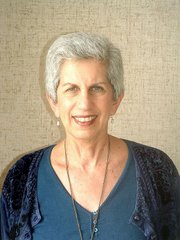
Recent interest in the theoretical background of Foresight Styles Assessment has lead to a paper soon to be published by the Journal of Futures Studies titled Foresight Styles Assessment: A theory based study in foresight competency and change.
For Certified Consultants who use FSA in their consulting or coaching, insight into our "entree" (some light theory) might be useful in working with clients. For "dessert" practical suggestions are offered.
The intentions of FSA are the same as for most assessments, allow for wide divergence in clients' views, attitudes, values, and behaviors, recognize the diversity with which they and their colleagues face change and aid clients in choosing approaches to change that consider both short and long term aspects.
Background
FS has its background in Innovation Diffusion research or how new ideas become integrated into a wider population. It is a scale from non-acceptance to quick adaption of the new. It is not just how we accept what's new, but has to do with the origin of the new idea and how each different adaption style affects long and short range results. When economic, climate, ecologic and energy questions fight for our attention and energy, the long-range and the short range come into perspective in a new light.
A number of assumptions that influenced the foresight theory are:
Evolutionary development has endowed Homo sapiens with genetic and physiological capabilities that allow them to do what no other animals can; form their future.
Holistic thinking is summarized as a spectrum, from the ability to see the larger picture with all its messy detail: holistic causality, everything-is-connected and a an attitude of contradictions that can see some validity in both sides. The locus of holistic thinking is the whole. Analytic thinking is described as slow, deliberative and conscious, rational analysis and discussion with locus of attention on the parts. Researchers from Eastern cultures refer to their research as holistic and Western researchers tend to use Duel Process and their term of choice.
The temporal aspect of FSA has to do with ones orientation or alignment to the past, the present or the future. It does not mean that the individual lives totally in one of these time zones, but find one or the other a comfort zone.
Under propensity to action there are two concepts. Being, becoming and doing describe the activity relationship we have to our total environment. We can be accepting within our environment, living instinctually with a certain amount of “flow” as Csikszentmihalyi describes it. We can understand the workings, patterns and systemic connections in our environment, or we can take action in order to bring about change. The being, becoming and doing continuum influences how each of the styles individualize themselves.
The other individualization influence is in the varying degree of personal need for structure which enables us to make sense of the world, to form and maintain a clear perception of our personal and work lives. A high personal need for structure implies a need for information and rules about the topic at hand and appears to correlate with a fear of lack of validity, cogency or acceptance by the larger group. In addition, when confronted with a proposed change, a personal need for structure can include a need to know what to expect, the need to maintain a daily routine, the fear of unpredictable situations and people, unclear and new rules, activities and expectations.
Paractical Tips
When using FSA with client groups or individuals, one can discuss need for or lack of need of structure, propensity to action, holistic or analytic thinking and temporal orientation. First, talk to yourself about your stance on these four orientations. Consider that your orientation will draw you to clients that have similar orientations and initiate a certain amount of judgment against those who do not. Bon appitit!



